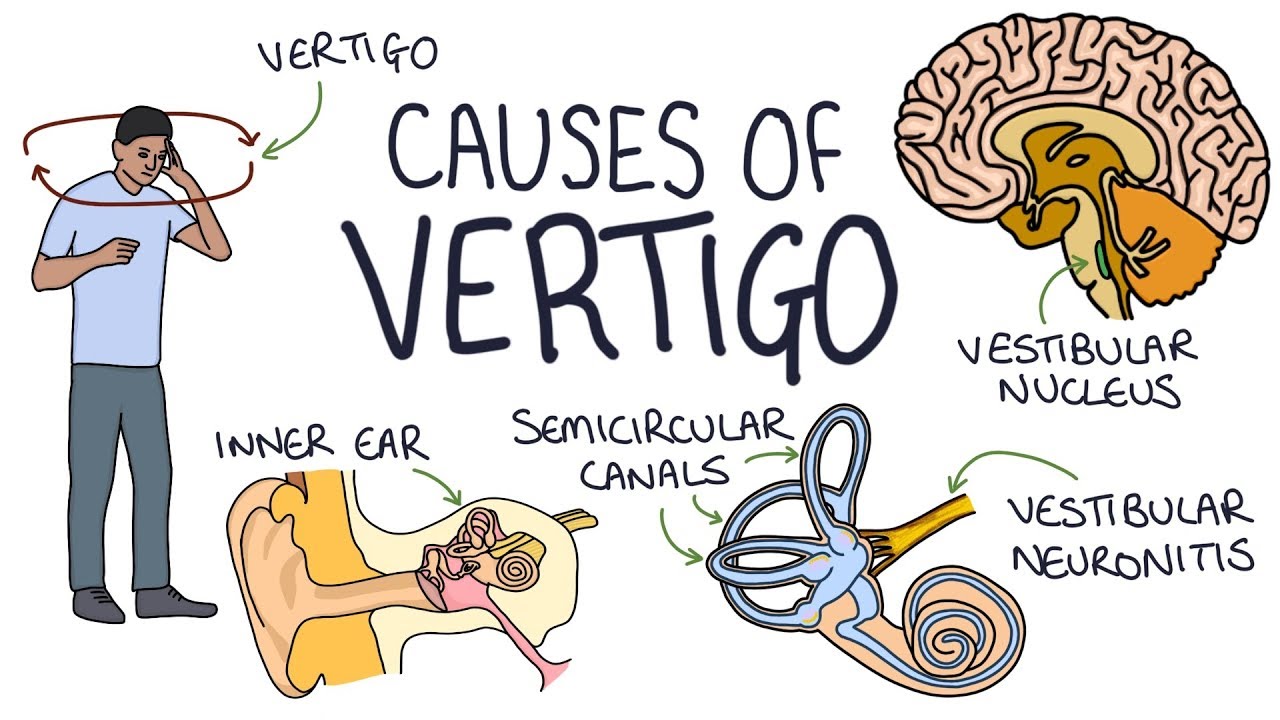Dizzy No More: The Osteopathic Spin on Easing Vertigo Woes!
Balancing Act: how Osteopathy offers relief for vertigo sufferers
Dizziness, a symptom with diverse origins, can arise from various factors. Contributors include inner ear disturbances like Benign Paroxysmal Positional Vertigo (BPPV), viral infections of the vestibular nerve, and conditions such as vestibular neuritis and Meniere’s disease. Circulatory issues, such as a drop in blood pressure and poor blood circulation, can also be responsible for inducing dizziness. Moreover, neurological conditions, medication side effects, anxiety disorders, low iron levels, low blood sugar, carbon monoxide poisoning, and issues related to overheating and dehydration are among the potential causes. Recognizing the underlying factors behind dizziness is pivotal for accurate diagnosis and targeted intervention.
This article further explores the adverse effects resulting from vestibular pathology and examines how Cranial Osteopathy may provide relief.
Peripheral vestibular disorders, including BPPV, Meniere’s disease, and vestibular neuritis, disrupt the normal functioning of the vestibular system. Your sense of balance relies on input from various components of your sensory system, including your eyes, sensory nerves transmitting messages about movements, and your inner ear housing sensors detecting gravity and motion. Vertigo, a false sense of surroundings spinning or moving, manifests when signals from the inner ear conflict with those received by the eyes and sensory nerves. These symptoms, ranging from mild dizziness to severe vertigo, significantly impact daily activities and overall quality of life.

Unlocking the Potential of Craniosacral Osteopathy:
Numerous studies have shone a spotlight on the effectiveness of cranial osteopathy in improving balance for individuals grappling with chronic peripheral vestibular disorders. By leveraging gentle manipulations and interventions, craniosacral osteopathy demonstrated its potential to regulate balance functions, offering hope for those seeking relief from the burden of prolonged dizziness.
A Holistic Approach to Vestibular Health:
Diving into the realm of vestibular health, research indicates that craniosacral osteopathy, when seamlessly integrated with traditional treatment methods, becomes a powerful strategy for managing chronic vestibular pathologies. This holistic approach addresses the intricate connection between the cranial system, vestibular information, visual inputs, and proprioceptive integration in the central nervous system.
Addressing Specific Vertigo Triggers:
It is important to highlight the relevance of craniosacral osteopathy in addressing specific triggers of vertigo, including upper cervical spine dysfunction. There is also a relationship between temporomandibular joint (TMJ) dysfunction and vestibular symptoms. Due to muscle hypertonicity resulting in nerve irritation serving a potential link between temporomandibular dysfunction and vertigo.
The Osteopathic Manual Therapy Connection:
OMT can play an important role in treatment, particularly in cases where conventional methods fall short in managing peripheral vestibular vertigo.
Clinical Implications and Recommendations:
This blog emphasizes the importance of considering cranial OMT for individuals battling chronic vertigo. This underscores its potential as a sustainable, long-term solution free from the side effects associated with certain medications. Ultimately, the integration of craniosacral osteopathy with conventional treatment methods and vestibular rehabilitation promises to enhance the quality of life for those navigating the intricate challenges posed by chronic vestibular disorders.
References:
Atay F, Bayralar K, Sarac ET, Effects of Craniosacral Osteopathy in Patients with Peripheral Vestibular Pathology. ORL J Otorhinolaryngol Relat Spec. 2021; 83(1):7-13. doi: 10.1159/000509486. Epub 2020 Sep 9. PMID: 32906128
Fraix M, Osteopathic Manipulative Treatment and Vertigo: A Pilot Study, PM&R, 2010,; 7(2). 612-618, https://doi.org/10.1016/j.pmrj.2010.04.001
Origo D, Tarantino AG, Romagnoli M, Vestibular failure managed with osteopathic manipulative treatment: A report of two cases. J Bodyw & Mov Ther. 2020 Jul; 24(3); 5-62. doi: 10.1016/j.bmt.2020.02.018. Epub 2020 Feb 22. PMID: 32826009
Rehman et al., Impact of osteopathic manipulative techniques on the management of dizziness caused by neuro-otologic disorders: systematic review and meta-analysis, Journal of Osteopathic Medicine, vol. 123, no.2, 2023, 91-101. https://doi.,org/10.1515/jom-2022-0119
